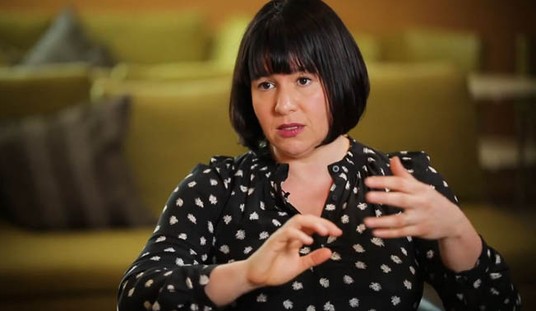When an industry’s employees push 96% of its reportable campaign contributions to one candidate, it’s fair to say it has a bias in a particular direction. When that industry is the national media, much of which purports to deliver objective reporting and analysis of said campaign, it’s more than fair to assume that the bias enters into their product. Washington Post analyst Callum Borchers tries to argue today that not all media figures are equal, and that political contributions do not measure media bias:
The donation discrepancy certainly won’t boost confidence in the neutrality of news reports, but numbers don’t tell the whole story. There are no campaign trail reporters on the list of Clinton contributors named in the Center for Public Integrity’s report; the only name that could be classified as covering the presidential politics beat in any way this year would be RT host Larry King, whose celebrity-oriented show features occasional political interviews …
The Center for Public Integrity’s findings would be far more concerning if they included the journalists who shape coverage of the race for the White House.
One could argue that people who work in the media — in any capacity — should refrain from making political donations. But because not everyone subscribes to that philosophy, let’s be clear about who the donors are: They are TV and food critics, sports and fashion editors, and local news reporters.
Borchers is correct that donations do not measure bias in reporting, although they can certainly indicate some bias in the reporters themselves. Fortunately, we don’t need to look far to corroborate what the CPI research suggests. The Shorenstein Center has conducted two surveys of media coverage in this cycle, the latter of which focused on media coverage of the four-week period in which the two major-party conventions took place. In my column for The Week, I contrast the coverage given to Donald Trump and Hillary Clinton, and the disparity becomes pretty obvious — and spectacular:
A study from Harvard’s Shorenstein Center of the four weeks encompassing and surrounding the two major-party political conventions makes this obvious. Trump’s news coverage during this period was 75 percent negative; the friendliest week Trump got from the media was the week of the convention itself — when it was “only” 55 percent negative.
Contrast that with the treatment Hillary Clinton received in the same period, which overall was 44 percent positive. Where no news outlet in the Shorenstein study managed to get to 40 percent positive coverage of Trump, all but one (Washington Times) had 40 percent or more positive coverage of Clinton. Four of the 11 media outlets offered better than 50 percent positive coverage to Clinton. While coverage of Trump’s qualifications only generated 22 percent positive coverage, 69 percent of the coverage of Clinton’s leadership qualities was positive.
Unlike Borchers’ argument, this relates directly to news coverage, not talking-head punditry or food reviews. Recall too that both conventions had divisive atmospheres, so there’s not much of an excuse for disparity of treatment. The first day of the Democratic convention was dominated by booing and protests from Bernie Sanders’ delegates, and at one point they “occupied” the media tent to get more attention from the press.
This cuts both ways, though, as the first Shorenstein study proved in July. Trump benefited from a bias in both scope and tone of coverage from the national media, with a 2:1 positive ratio on the latter throughout 2015. Thomas Patterson, the author of both studies, noted the dramatic change in coverage in his second analysis. “From the time he announced his candidacy until the start of the conventions,” he points out, “Trump had not experienced anywhere near the press criticism directed at him during the final two weeks of the convention period.”
Until then, Trump and his backers assumed that he had a winning formula of manipulating the media, but that turned out to be an illusion:
Republicans have long contended with media bias. That was one of Trump’s supposed selling points — that his celebrity would outmatch any bias in the media, and that his own media savvy would make him unbeatable. Republicans who prized victory over policy or character backed Trump because he would hold nothing back, taking the fight to the Clintons and using his mastery of media manipulation to benefit the GOP. Skeptics pointed out that Trump’s long and controversial history in business and the media made him particularly vulnerable to late-season attacks based on opposition research — and that primary media coverage patterns would not hold up in the general-election season.
Clearly, the skeptics got it right.
In a way, everyone’s right. Trump is correct that the media is trying to “rig” the election through its coverage and influence with voters. However, Trump might not be here at all had it not been for media manipulation in the primary, either through his own power or as a longer-term strategy from the media itself. It’s also a lesson that running an unvetted and inexperienced candidate in a general election will usually backfire, especially for Republicans facing a hostile media environment. But there is absolutely no doubt that this media bias exists.








Join the conversation as a VIP Member